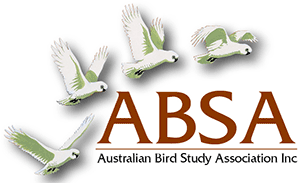Diet and breeding of White-bellied Sea-Eagles Haliaeetus leucogaster in subtropical river habitats in the Northern Territory, Australia
| Posted: |
29/03/2021 |
| Author(s): |
Laurie Corbett, Tony Hertog |
Diet and breeding of White-bellied Sea-Eagles Haliaeetus leucogaster were studied at two sites in the subtropical
Northern Territory of Australia over seven years: at Mary River (20 territories), characterised by a permanently high water
level; and the Alligator Rivers at Kapalga (20 territories), characterised by high wet-season and low dry-season water levels.
Overall diet comprised aquatic reptiles (45%), fi sh (28%), birds (24%) and mammals (3%). Relatively more fi sh and
snakes were taken at Mary River and relatively more turtles and birds at Kapalga. Nests were signifi cantly closer at Mary
River (mean 0.9 km apart) than at Kapalga (mean 6.5 km apart). Most eggs were laid from May to August and most
nestlings were fl edged from August to October. Signifi cantly more Sea-Eagle pairs successfully bred annually at Mary
River (mean 7.7 pairs) than at Kapalga (mean 4.1 pairs), and signifi cantly more young were fl edged annually at Mary
River (mean 9.3) than at Kapalga (mean 4.6). Mortality included eggs that failed to hatch, facultative fratricide in downy
nestlings, and death of nestlings from avian pox, fratricide and accidents. Downy nestling mortality was signifi cantly greater
at Kapalga (mean 3.3/year) than at Mary River (mean 1.1/year). Sea-Eagle breeding habitats in the Northern Territory are
under increasing threat from urban and tourism developments. This threat needs to be addressed through a process of
management plans and public awareness programs about the ecological role of White-bellied Sea-Eagles.
>> Download Abstract |
File Size: 10KB
>> Download Complete PDF | File Size: 1MB
